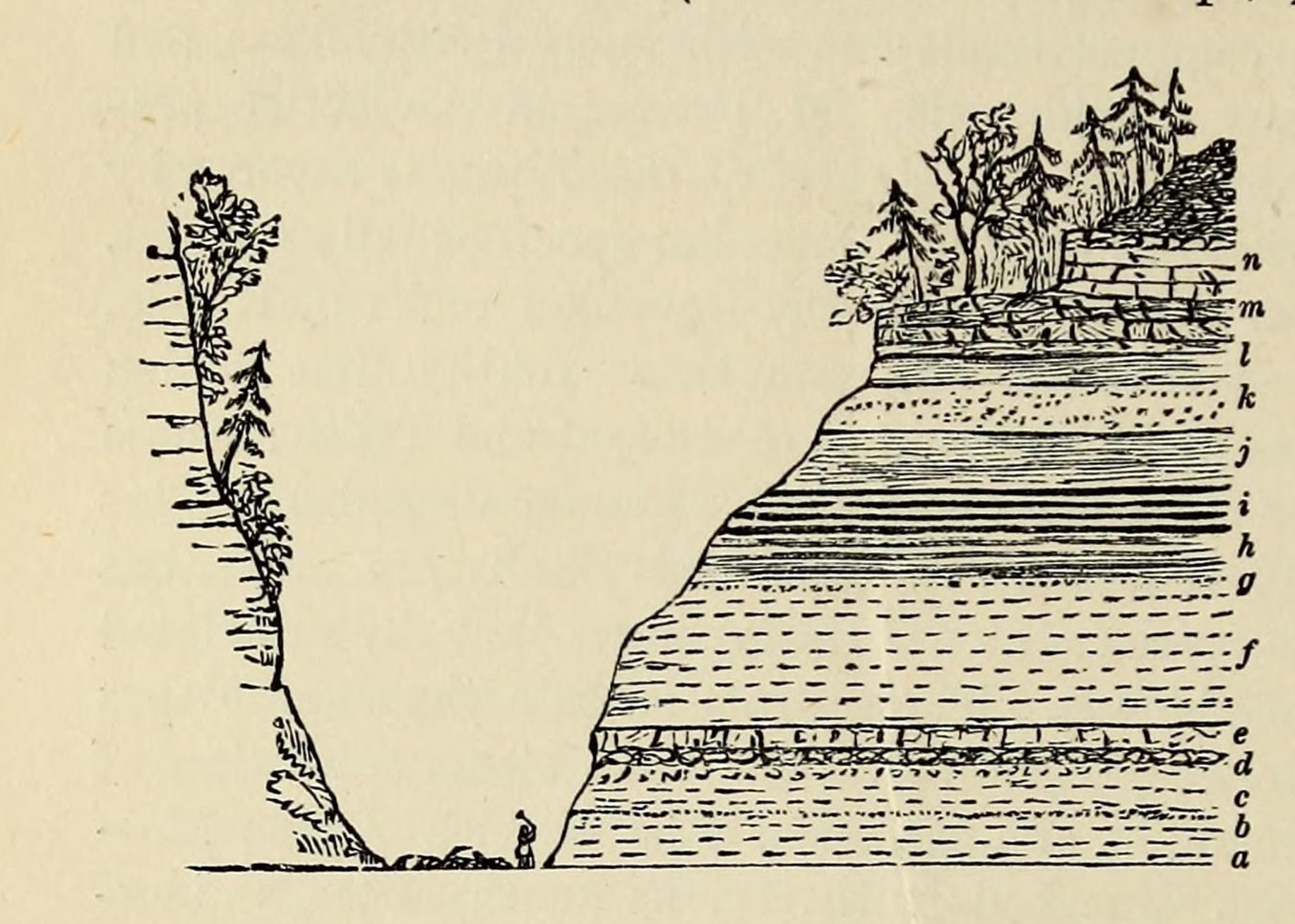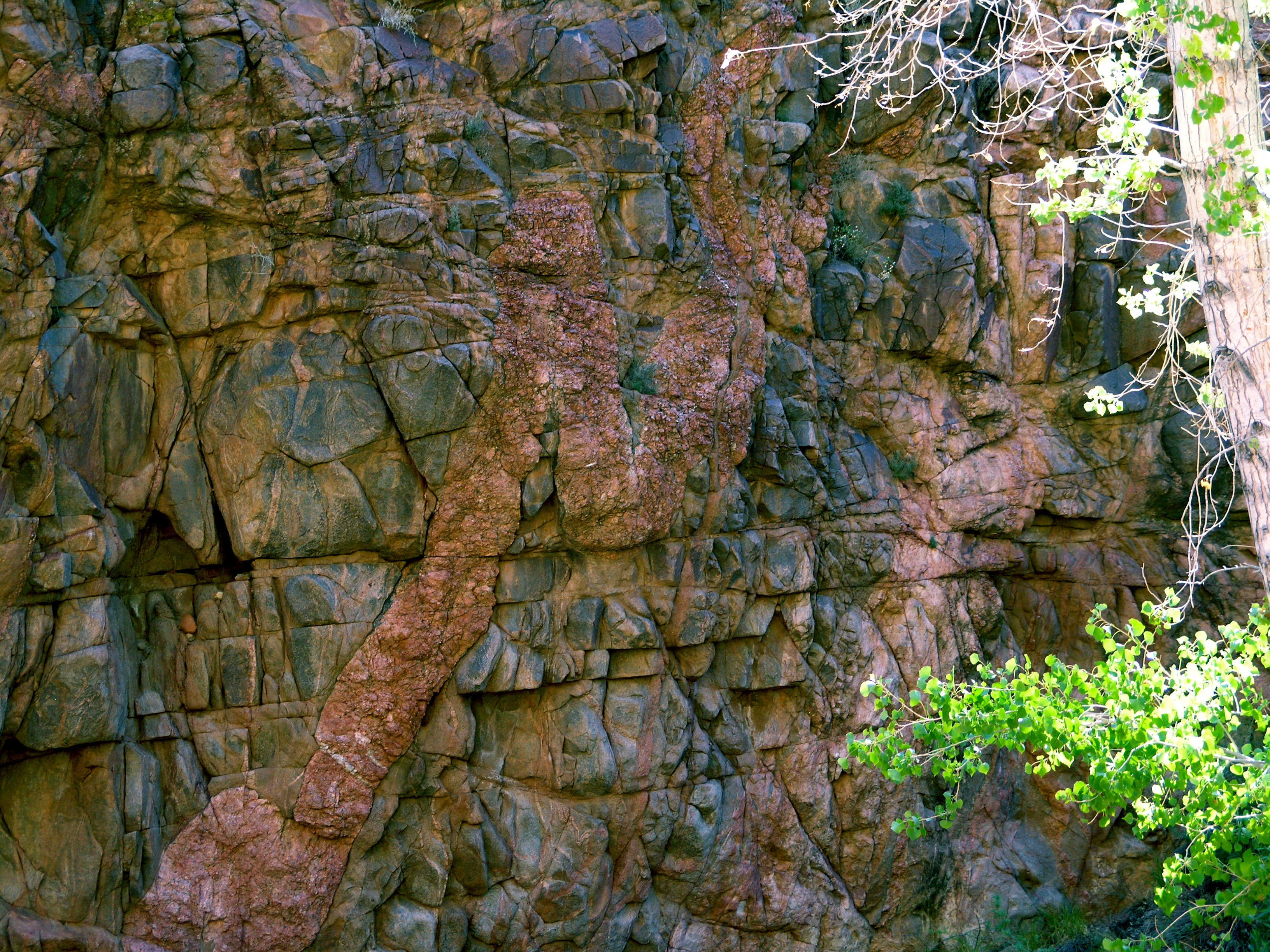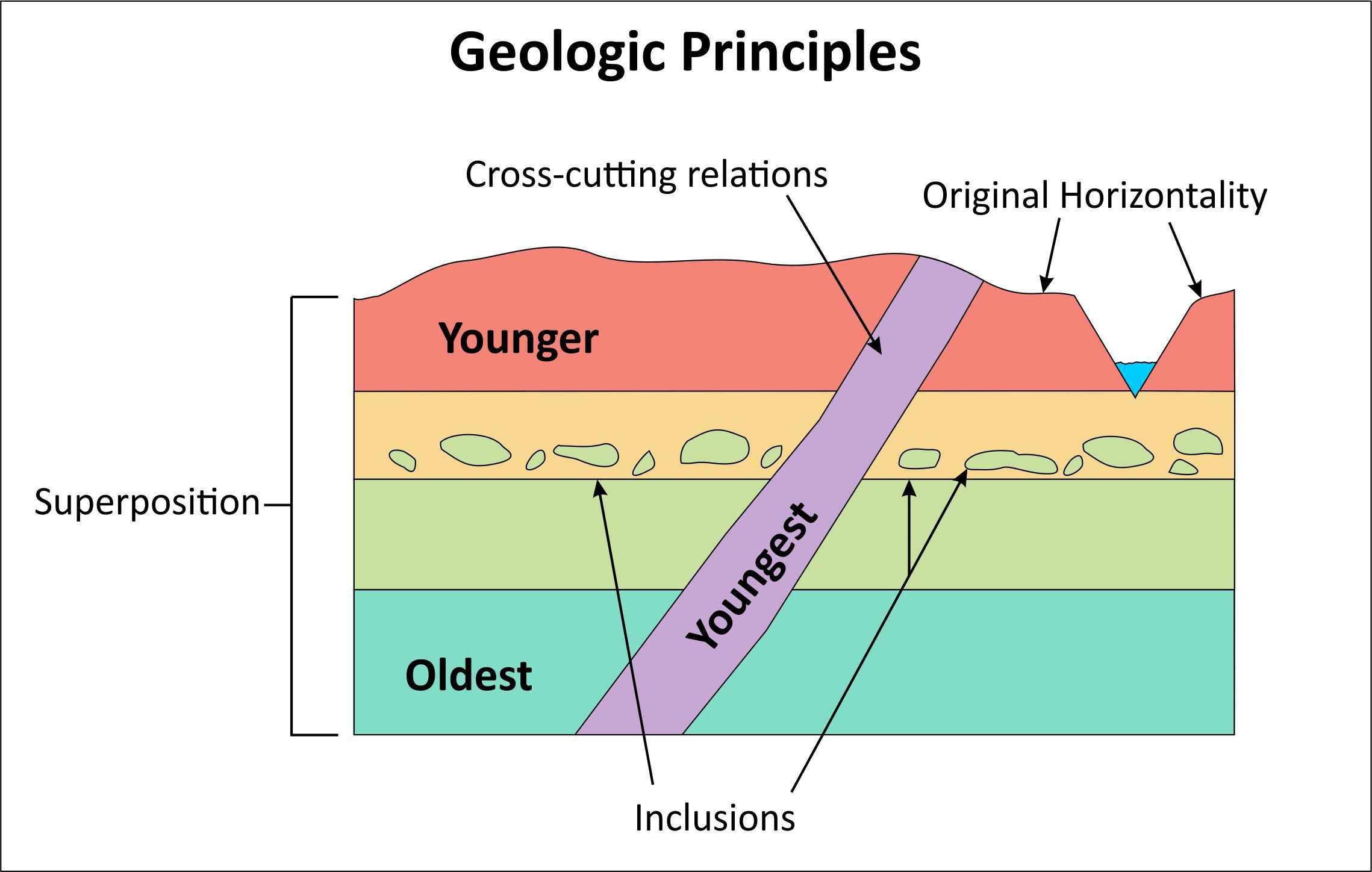Photo Gallery

© The Field Museum - CC BY-NC

© The Field Museum - CC BY-NC

Stratigraphy is the branch of geology concerned with the order and relative position of strata and their relationship to the geological time scale. Stratigraphy has six basic principles that are used to determine the relative age of a sequence of layered rocks:
1. Original Horizontality - States that sedimentary rocks are originally deposited in flat horizontal layers and then may later be tilted by faults and folding.
2. Lateral Continuity - Layers are originally deposited as continuous layers that may be faulted or removed by erosion after their deposition.
3. Superposition - States any sedimentary layer or bed can be assigned an "older" or "younger" age relative to the layers below and above it. This principle is critical as the basis for the relative geologic time scale.
4. Cross-Cutting Relations - A dike or sill is younger than the rocks they cut across. The purple dike is younger than the green yellow, and red rocks that it cross cuts.
5. Inclusions - Fragments of rocks contain in another rock are older than the layer that they are contained in.
6. Faunal Succession - Fossils occur in sedimentary rock layers and fossils succeed each other in time and this can be used to predict the relative age of sedimentary rock layers and to correlate rock layers.
In the diagram above five of the six principles are illustrated:
1. The diagram shows four sedimentary rock layers teal, light green, yellow, and red (from bottom to top). These were all originally deposited as flat horizontal layers.
2. They top red layer is cut by a river. Originally the red layer was continuous but the river has eroded away the rock and formed a canyon.
3. The teal, light green, yellow, and red layers form a "stack" of sedimentary layers, the oldest layer is teal at the bottom of the stack and the youngest layer, red, is at the top.
4. The purple dike cross-cuts all four sedimentary rock layers and is therefore the youngest rock in the diagram.
5. Inclusions of fragments from the green rock layer are in the yellow layer. These green fragments are older than the yellow layer.

